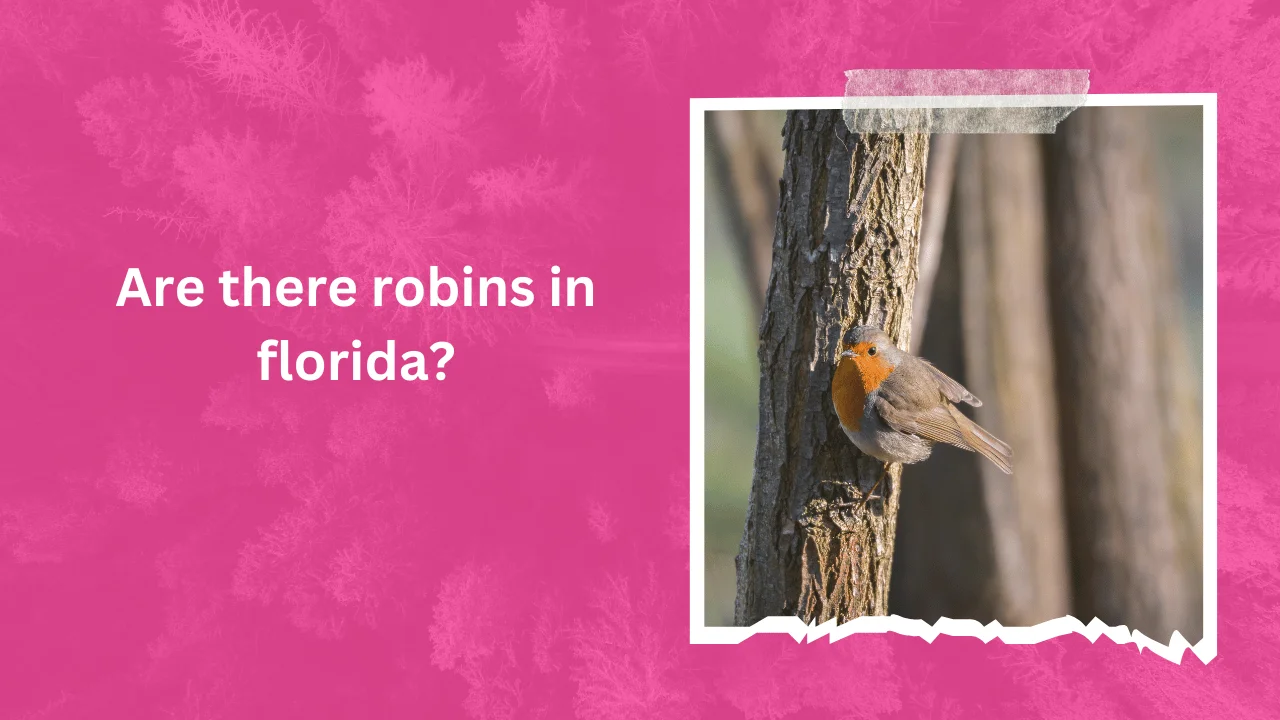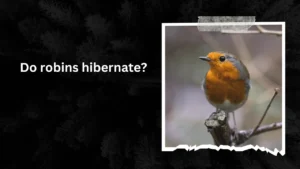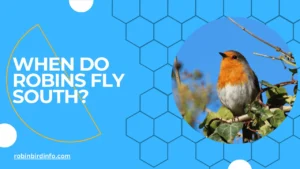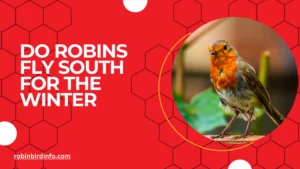Ever gazed out your Florida window and spotted a flash of red amongst the palm trees?
You might do a double take, wondering, “Wait, are there Robins in Florida?” It’s a surprising question, isn’t it? We typically associate these cheerful songbirds with cooler climates, their cheery chirps a harbinger of spring in many parts of North America.
But the truth about Robins is more fascinating than you might think!
While the image of a Robin perched on a snowy branch is iconic, some Robin populations defy expectations by migrating south for the winter. And guess what? Florida can be one of their surprising winter destinations!
This unexpected twist raises several questions. What attracts Robins to the Sunshine State? How do they cope with the drastic change in climate? This blog post delves into the intriguing world of Florida Robins, exploring their migration patterns, the unique challenges they face in a warmer environment, and the fascinating ways they adapt to survive and thrive.
So, grab a cup of coffee, settle in, and get ready to discover a whole new side to these beloved birds!
Contents
American Robin’s Natural Range
The American Robin is a familiar bird species across much of North America. Its native range spans from Alaska to Newfoundland and south to Mexico. During the breeding season, Robins establish territories and nest in a variety of habitats, including forests, woodlands, and urban areas.
Migration patterns vary among different populations. Some Robin populations are resident and remain in their breeding territories year-round, while others are migratory, traveling south to warmer climates for the winter.
The timing and distance of migration can be influenced by factors like weather conditions and food availability.
Robins in Florida
Florida is a popular winter destination for many migratory birds, including American Robins. The state’s mild climate and abundant food sources make it an attractive wintering ground. Robins can be found in various habitats in Florida, including parks, gardens, and wooded areas.
Food sources for Robins in Florida include berries, fruits, and insects. They may also feed on nectar from flowers, especially during the spring and summer months.
Challenges Faced by Robins in Florida
While Florida offers a suitable winter habitat, Robins may face certain challenges. High temperatures and humidity can be stressful for these birds, especially during the summer months. They may need to find shaded areas and increase their water intake to stay cool.
Predation is another concern. Cats, snakes, and birds of prey can pose a threat to Robins, particularly during the breeding season.
Competition for food and nesting sites with other bird species can also be a challenge, especially in urban areas.
Adaptations to Florida’s Environment
To cope with the warmer climate, Robins may exhibit certain behavioral adaptations. They may reduce their activity levels during the hottest parts of the day and seek out shaded areas. Additionally, they may increase their water intake to help regulate their body temperature.
While there are no specific physiological adaptations known to help Robins tolerate Florida’s climate, their general adaptability and ability to find suitable food and shelter contribute to their survival in this environment.
Florida’s mild climate may also influence Robin breeding patterns. Some populations may start nesting earlier in the year compared to those in colder regions.
Conservation Implications
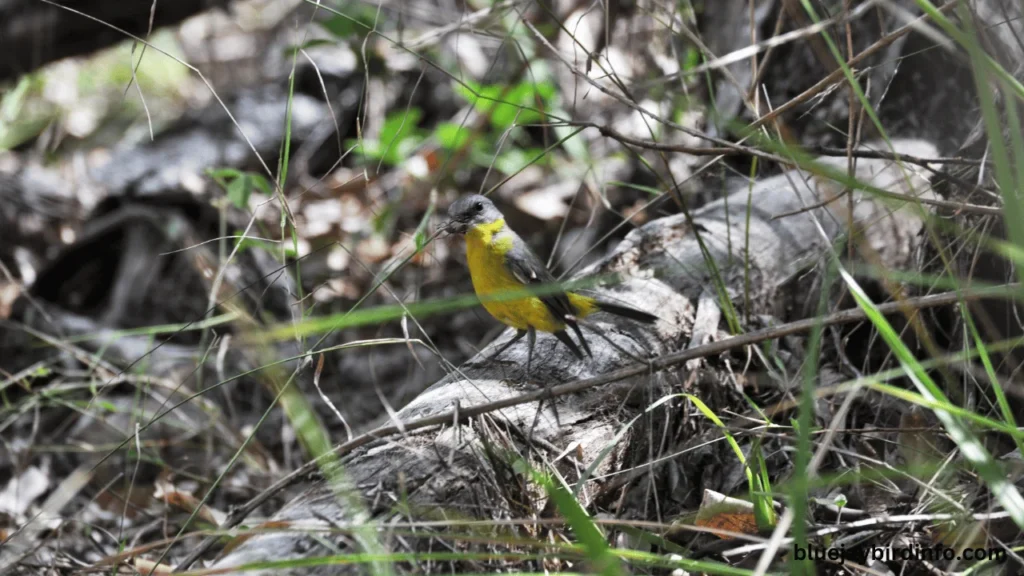
Habitat loss due to urbanization and development is a major threat to Robin populations in Florida. Protecting and restoring natural habitats, such as forests and wetlands, is crucial for their survival.
Human activities, such as the use of pesticides and herbicides, can also negatively impact Robin populations. These chemicals can harm insects, which are an important food source for Robins.
Citizen science initiatives can help monitor Robin populations and identify areas where conservation efforts are needed. By participating in bird surveys and reporting sightings, individuals can contribute to the protection of these beloved birds.
Conclusion
While American Robins are more commonly associated with colder climates, they can also thrive in warmer regions like Florida. By understanding their migration patterns, habitat preferences, and adaptations, we can appreciate the resilience and adaptability of these fascinating birds.
Protecting their habitats and minimizing human impact is essential for ensuring the continued survival of Robin populations in Florida and beyond. By taking steps to conserve these birds, we can help preserve the beauty and diversity of our natural world.
FAQ’s
Are Robins native to Florida?
No, American Robins are not native to Florida. They are migratory birds that typically breed in northern regions and migrate south for the winter.
When do Robins typically arrive in Florida?
Robin migration to Florida typically begins in the late fall and early winter months. The exact timing can vary depending on weather conditions and food availability.
Where do Robins go in Florida during the winter?
Robins in Florida can be found in a variety of habitats, including forests, woodlands, parks, and urban areas. They often congregate in large flocks, particularly during the winter months.
What do Robins eat in Florida?
In Florida, Robins primarily feed on fruits, berries, and insects. Common food sources include berries from native plants, such as holly and dogwood, as well as insects like caterpillars and beetles.
How can I attract Robins to my Florida yard?
To attract Robins to your Florida yard, you can provide a variety of food sources, including birdseed, mealworms, and fresh fruit. You can also create a bird-friendly environment by planting native plants, offering clean water sources, and providing nesting sites.
Are there any threats to Robins in Florida?
Robins in Florida face various threats, including habitat loss, predation, and disease. It’s important to protect their habitats and minimize human impact to ensure their survival.

